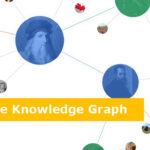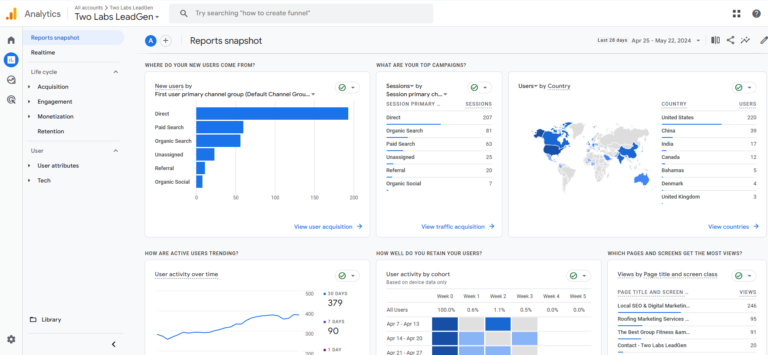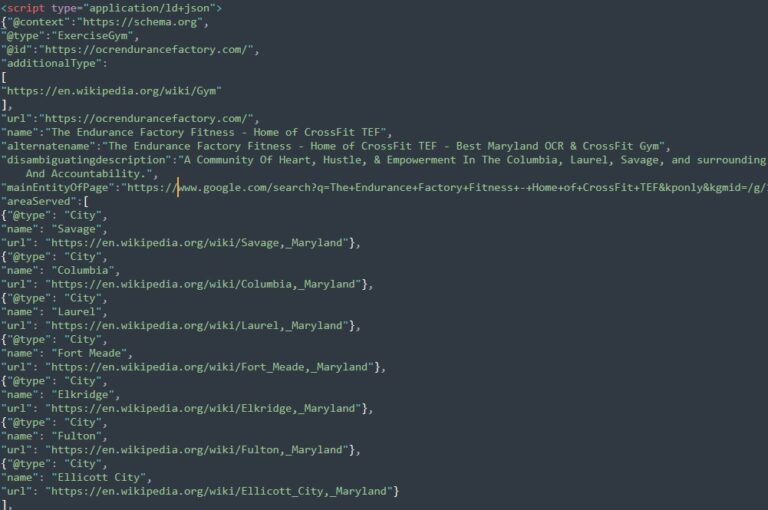Table of Contents
ToggleThe concept of entity linking plays a pivotal role in ensuring that content is effectively connected and understood by both search engines and users within the field of digital marketing and data science. Utilizing advanced algorithms and data structures, entity linking methods in semantic SEO, and data science have become essential for improving the visibility and relevance of online content. By accurately identifying and linking relevant entities within a piece of content, businesses can enhance their search engine rankings, improve user experience, and extract valuable insights from their data.
In this comprehensive blog post, we will explore the various entity linking methods used in semantic SEO and data science, exploring their importance, implementation, and impact on online visibility and data analysis. Whether you are a digital marketer looking to optimize your content for search engines or a data scientist seeking to extract meaningful insights from unstructured data, understanding entity-linking methods is crucial for success in the ever-evolving digital landscape.
Join us as we uncover the intricacies of entity linking in the context of semantic SEO and data science, and discover how it can revolutionize the way we approach content optimization and data analysis.
Key Takeaways:
- Entity linking is a crucial method in both semantic SEO and data science, allowing for the identification and connection of entities within text and data.
- Understanding the context and relevance of entities is essential for accurate entity linking and can significantly impact search engine optimization and data analysis results.
- Various entity linking methods such as dictionary-based, supervised, and unsupervised approaches are employed in semantic SEO and data science, each with its advantages and limitations.
Fundamentals of Semantic SEO
Some of the most influential processes in the world of SEO involve leveraging the power of semantic search. This involves optimizing content for search engines by helping them understand the meaning of the content and its context, rather than just its keywords or phrases. Understanding the fundamentals of Semantic SEO is crucial for staying ahead in the competitive digital landscape.
Defining Semantic SEO
Semantic SEO refers to the practice of optimizing web content and markup to improve the way search engines interpret and categorize information. This allows search engines to deliver more relevant and accurate results to users, ultimately improving the overall search experience.
For instance, by structuring content with semantic markups and schema, search engines can better understand the relationships between different entities within the content, resulting in richer and more informative search results for users.
Importance of Structured Data and Schema Markup
As search engines have evolved, the use of structured data and schema markup has become increasingly important in Semantic SEO. This structured data provides search engines with explicit clues about the meaning and context of the content, enabling more accurate indexing and better presentation of search results. Properly implemented structured data can lead to rich snippets and enhanced search listings, ultimately improving the visibility and click-through rates for web pages. In short, structured data and schema markup are vital components of Semantic SEO, helping search engines to better understand and display the content to users.
Entity Linking: Concept and Significance
Obviously, every digital marketer and data scientist understands the importance of entity linking in the realm of semantic SEO and data science. Entity linking refers to the process of connecting mentions of entities in a piece of content to their respective entities in a knowledge graph or database. This not only helps search engines understand the context and meaning of the content but also enriches the overall user experience. Effective entity linking can significantly improve the visibility and relevancy of web content in search results.
Understanding Entities and Their Roles in SEO
The first step to understanding entity linking is to comprehend the concept of entities in the context of SEO. In simple terms, entities can be people, places, things, or concepts that are distinct and unique. In the context of search engine optimization, entities are the building blocks of structured data and play a crucial role in helping search engines understand the content and its relevance to user queries. By identifying and linking entities within content, digital marketers can improve the depth and accuracy of semantic search and enhance the overall visibility of their web properties.
The Process of Entity Linking in Content
Roles The process of entity linking in content involves identifying mentions of entities within the text and linking them to their corresponding entries in a knowledge graph or database. This is typically done using natural language processing and machine learning algorithms to identify and disambiguate entities. The linked entities can then be used to provide additional context to the content, improve the accuracy of search results, and enhance the overall user experience.
Any effective entity-linking strategy should take into account the relevance, authority, and trustworthiness of the linked entities, as well as the overall coherence and quality of the linked content. By incorporating entity linking methods into their SEO and content strategies, digital marketers can improve the visibility, relevance, and user experience of their web properties.
Entity Recognition Techniques
For individuals working in Semantic SEO and Data Science, maintaining updated knowledge of the newest entity recognition methods is crucial. With the growing importance of entities in search algorithms and data analysis, understanding the different methods for recognizing and detecting entities is crucial for success in these fields.
Named Entity Recognition (NER) Methods
One of the most commonly used techniques for entity recognition is the Named Entity Recognition (NER) method. NER involves identifying and classifying entities within a text, such as people, organizations, locations, dates, and more. This method relies on linguistic patterns and rules to identify entities, and it plays a crucial role in tasks such as information retrieval, question answering, and text summarization.
One key challenge in NER is handling ambiguous entities and variations in entity names, which requires robust methods for disambiguation and normalization. NER methods have evolved over the years, incorporating techniques such as machine learning, deep learning, and domain-specific knowledge bases to improve accuracy and performance.
Machine Learning Algorithms for Entity Detection
One approach to entity detection involves using machine learning algorithms to automatically identify and categorize entities within a given text. Machine learning algorithms can be trained on labeled data to recognize patterns and features associated with different types of entities, enabling them to generalize to new, unseen text. These algorithms include techniques such as supervised learning, semi-supervised learning, and unsupervised learning, each with its own strengths and limitations in entity detection tasks.
Methods such as conditional random fields, support vector machines, and deep learning models have been applied to entity detection with varying degrees of success, depending on the nature of the text data and the complexity of the entity recognition task. Leveraging the power of machine learning algorithms for entity detection can significantly improve the accuracy and scalability of entity recognition systems in Semantic SEO and Data Science applications.
Methods include named entity recognition, machine learning algorithms, entity detection, entity recognition techniques, Semantic SEO, data science, Named Entity Recognition, NER, machine learning algorithms, entity disambiguation, deep learning, entity normalization, supervised learning, and unsupervised learning.
Entity Resolution and Disambiguation
Entity resolution involves identifying and linking different mentions of the same entity, while entity disambiguation involves distinguishing between entities with similar names or attributes.
Techniques for Resolving Entity Ambiguity
For resolving entity ambiguity, various techniques can be employed, such as using context-based disambiguation to determine the correct entity based on the surrounding text. Another approach is to leverage external knowledge bases or ontologies to disambiguate entities by matching attributes and relationships.
Entity Canonicalization Strategies
For entity canonicalization, it is important to establish a standardized representation for each entity, which involves normalizing different variations of entity mentions. Additionally, employing entity resolution algorithms to identify and group related entities together can help in the canonicalization process.
Plus, incorporating machine learning models for entity canonicalization can improve the accuracy of the process, enabling automated handling of entity variations and synonyms.
Application of Entity Linking in Data Science
Entity linking plays a crucial role in enhancing data analysis by providing a mechanism to connect unstructured data with structured knowledge sources, thereby enriching the understanding and interpretation of complex datasets.
Enhancing Data Analysis with Entity Linking
Enhancing data analysis with entity linking involves the use of algorithms and tools to automatically identify and link entities mentioned in unstructured data to their corresponding entries in knowledge bases and ontologies. By incorporating entity linking into data science workflows, organizations can improve the accuracy and depth of their data analysis, leading to more informed decision-making and actionable insights. This can be particularly valuable in fields such as natural language processing, computational linguistics, and information retrieval, where understanding the context and relationships between entities is critical.
Entity Linking in Knowledge Graphs and Databases
Entity linking in knowledge graphs and databases refers to the process of connecting entities mentioned in unstructured or semi-structured data to their representations in knowledge graphs, ontologies, or databases. This enables the integration of diverse data sources and facilitates the discovery of new connections and patterns within the data. Knowledge graphs, in particular, provide a powerful framework for organizing and representing entities and their relationships, making them an ideal target for entity linking in data science applications.
Knowledge graphs offer a rich semantic structure that can capture complex relationships between entities, attributes, and classes, providing a valuable resource for data scientists and researchers. By harnessing the power of entity linking in knowledge graphs and databases, organizations can unlock the full potential of their data assets and gain deeper insights into the underlying structure and meaning of their data. This can contribute to more effective data management, knowledge discovery, and advanced analytics, ultimately leading to more intelligent and informed decision-making.
Tools and Technologies for Entity Linking
Despite the complexity of entity linking, there are several tools and technologies available to streamline the process and improve its accuracy. These tools encompass a range of software and frameworks designed specifically for semantic entity linking, as well as methods for integrating entity linking with SEO best practices.
Software and Frameworks for Semantic Entity Linking
On the software and frameworks front, there are several powerful tools available for semantic entity linking. Apache Stanbol, for example, is an open-source semantic engine that offers entity-linking capabilities and integrates with content management systems. Another notable tool is DBpedia Spotlight, which provides automatic annotation of text documents using linked data from the DBpedia knowledge base. These tools, among others, offer extensive support for entity linking within the context of data science and semantic SEO.
Integrating Entity Linking Tools with SEO Practices
Semantic entity linking can greatly enhance SEO efforts by improving the understanding and relevance of content to search engines. By integrating entity linking tools with SEO practices, content can be enriched with structured data, resulting in better visibility and higher rankings in search results. This involves leveraging tools such as Google’s Structured Data Markup Helper and Schema.org to markup content with relevant entities and attributes, ultimately improving its search engine optimization.
Tools and technologies for entity linking play a crucial role in bridging the gap between semantic SEO and data science, providing the means to effectively link entities within content and optimize it for improved search visibility. By understanding and leveraging these tools, businesses can take advantage of the interconnectedness of entities to enhance their online presence and drive organic traffic to their digital properties.
Case Studies and Real-World Examples
Below are some prominent instances where entity linking has proven to be highly effective.
Entity Linking Success Stories in Digital Marketing
Marketing professionals have witnessed remarkable success with entity linking in their digital campaigns. By incorporating entity linking methods, companies have experienced improved organic search rankings, increased website traffic, and higher conversion rates. The ability to establish context and relevance through entity linking has significantly amplified the impact of digital marketing efforts, leading to tangible business outcomes.
Marketing professionals are increasingly recognizing the pivotal role of entity linking in semantic SEO and its contribution to an effective digital marketing strategy cannot be overstated. Leveraging entity linking has proven to be a game-changer in the competitive landscape of digital marketing, providing a distinct advantage to brands in reaching and engaging their target audience.
Data Science Projects Leveraging Entity Linking
An indispensable aspect of data science projects is the utilization of entity linking to extract valuable insights from unstructured data. By employing entity-linking algorithms, data scientists have been able to accurately annotate and link entities within large datasets, leading to the discovery of meaningful patterns and correlations. Entity linking has enabled data scientists to enhance the accuracy and depth of their analyses, thereby unlocking hidden value within complex data structures.
Case studies in data science projects leveraging entity linking have demonstrated their pivotal role in natural language processing, knowledge graph construction, and information retrieval. The integration of entity-linking methodologies has empowered data scientists to derive comprehensive and actionable intelligence from diverse sources, contributing to the advancement of data-driven decision-making processes.
Challenges and Future Directions
Now that we have explored the various entity-linking methods in semantic SEO and data science, it is important to consider the challenges and future directions in this field. In order to advance the effectiveness and efficiency of entity linking, it is crucial to acknowledge the limitations of current methods and also explore potential developments for the future.
Limitations of Current Entity Linking Methods
Linking entities to their accurate and relevant knowledge sources can be challenging due to the ambiguity of language, the diversity of named entities, and the lack of context in certain domains. Current entity linking methods may struggle with resolving co-reference and disambiguation issues, leading to inaccurate linkages and potentially impacting the overall quality of semantic search results and data analysis.
Furthermore, scalability and real-time processing of large datasets pose significant challenges for existing entity linking methods, especially when dealing with dynamic and constantly evolving information on the web. These limitations need to be addressed in order to enhance the precision and recall of entity linking algorithms, ensuring the delivery of reliable and comprehensive semantic search results.
Potential Developments in Semantic SEO and Data Science
Potential developments in entity linking methods include leveraging advanced natural language processing techniques, machine learning algorithms, and knowledge graph integration to improve the accuracy and efficiency of entity disambiguation and linking. By incorporating contextual information, fine-tuning entity representations, and utilizing feedback mechanisms, future entity linking methods can enhance their ability to effectively link entities to their appropriate knowledge sources across different domains and languages.
Furthermore, the integration of structured and unstructured data sources, as well as the incorporation of user behavior and intent signals, can enhance the context-awareness and relevance of entity linking in semantic SEO and data science applications. By embracing a holistic approach that combines content analysis, entity recognition, and knowledge base augmentation, future developments in entity-linking methods can achieve greater precision, scalability, and adaptability in addressing the challenges of entity linking in the evolving landscape of information retrieval and data analysis.
Future directions in entity linking methods within the context of semantic SEO and data science involve exploring novel approaches for resolving co-reference and disambiguation challenges, optimizing scalability and real-time processing capabilities, and integrating multi-modal and multi-lingual entity linking techniques. By addressing these challenges and embracing potential developments, the field of entity linking will continue to play a pivotal role in advancing the effectiveness and relevance of semantic search and knowledge discovery in the digital age.
Conclusion
To wrap up, entity linking methods play a crucial role in semantic SEO and data science. By accurately identifying and linking entities within text data, these methods enhance the overall understanding and organization of information, leading to improved search engine rankings and more relevant search results. Additionally, entity-linking methods enable more effective data analysis and extraction of valuable insights, ultimately contributing to better decision-making and business outcomes.
As the field of SEO and data science continues to evolve, the importance of entity-linking methods cannot be overstated. With advancements in natural language processing and machine learning, we can expect to see even more powerful and sophisticated entity linking techniques that further enhance the capabilities of semantic SEO and data science, driving better outcomes for businesses and users alike.
FAQ
Q: What are Entity Linking Methods in Semantic SEO and Data Science?
A: Entity Linking Methods in Semantic SEO and Data Science are techniques used to identify and link entities, such as people, places, and things, mentioned in text to a knowledge base or database, to provide more context and improve the understanding of the content.
Q: Why are Entity Linking Methods important in Semantic SEO and Data Science?
A: Entity Linking Methods are important in Semantic SEO and Data Science because they help search engines and data analysis systems better understand the content and context of the information, leading to more relevant search results and better insights from data.
Q: What are some common Entity Linking Methods used in Semantic SEO and Data Science?
A: Common Entity Linking Methods used in Semantic SEO and Data Science include Named Entity Recognition (NER), entity disambiguation, knowledge graph integration, and entity resolution. These methods help to identify and link entities to relevant sources or databases.
Q: How does Entity Linking impact search engine optimization (SEO) and data analysis?
A: Entity Linking can impact search engine optimization by providing search engines with more context about the content, which can lead to higher search result rankings and increased visibility. In data analysis, Entity Linking can improve the accuracy and relevance of the insights gained from the data by providing additional context and connections.
Q: What are some best practices for implementing Entity Linking Methods in Semantic SEO and Data Science?
A: Best practices for implementing Entity Linking Methods include using high-quality knowledge bases and databases, considering context and ambiguity when linking entities, and regularly updating and maintaining entity links to ensure accuracy and relevancy. It is also important to consider the specific requirements and goals of the SEO or data analysis project when choosing and implementing Entity Linking Methods.












